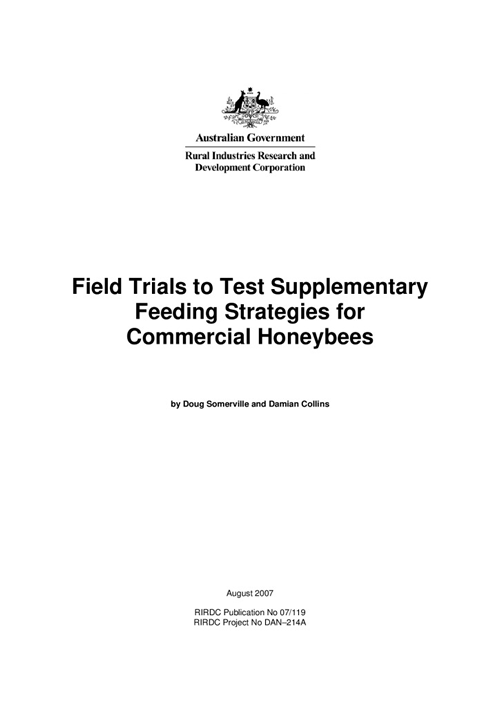The Australian honey bee industry has historically relied on honey production as its main source of income, with the need to manage extremes in floral resource availability in the form of suitable flowering events as the critical factor. Honey bees collect nectar and pollen, both of which are vital to maintain high productivity levels in managed bee hives. Periodically there is a short fall in one or both of these floral rewards which produces difficulties for beekeepers to maintain healthy populous colonies of honey bees. Supplementary feeding has been trialled by many beekeepers over many decades with mixed success.
Trials involving four commercial apiaries testing various supplementary feeding strategies were conducted over the winter periods of 2003 and 2004. This research provided evidence of the vagrancies of supplementary feeding honey bees over the winter. It also provided a direction for future research in this area and a number of suitable options to consider.





